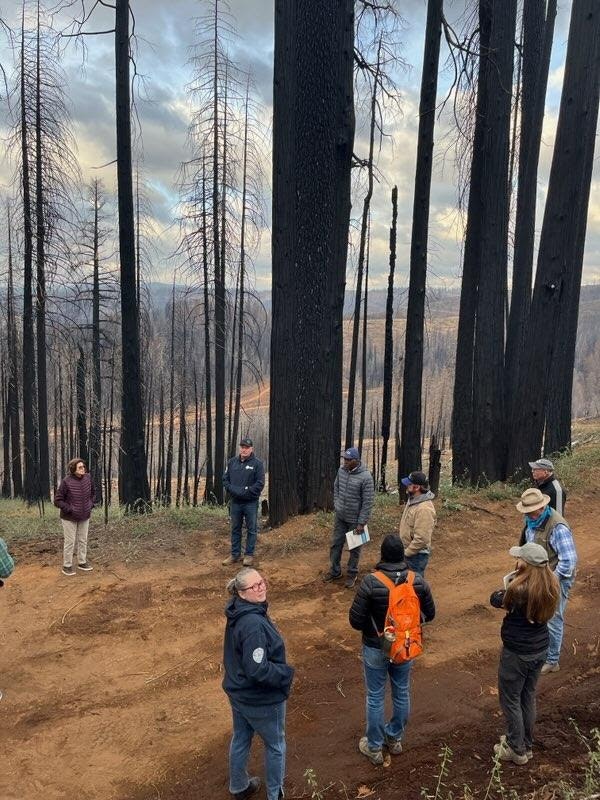A VISIT TO THE CALDOR FIRE BURN SCAR...

Caldor Fire Recovery
At the 77th annual California Association of Resource Conservation Districts (CARCD) conference, employees of the Amador RCD were given the opportunity to visit the Caldor fire scar; the Caldor fire devastated many lives in the Central Sierra’s, burning more than 220,000 acres and destroying hundreds of structures. Fires like this are becoming more and more common in the Sierra’s, leaving many to wonder: How can fires of this magnitude be stopped? And how can the land they burned be restored?
The CARCD conference featured guests from Sierra Pacific Industries and the El Dorado and Georgetown Divide Resource Conservation Districts in sharing details on projects they’ve been working on that address these questions.
The El Dorado and Georgetown Divide RCD’s have been implementing their project, Fire Adapted 50, along the Highway 50 corridor in El Dorado County. This project is broken into phases and mostly consists of mastication work to reduce the risk of crown fires in the project area and improve forest resiliency to fire. This project entails the removal of ladder fuels like small diameter trees and shrubs, increasing spacing between remaining trees, and pruning trees to 10 feet. While the areas of this project where work has been completed didn’t burn in the Caldor fire, they were instrumental in preventing the fire from spreading into surrounding communities like Pollock Pines. Firefighters were able to use areas where work had been completed as a foothold and light backfires against the Caldor. Thanks to the work done, the backfires did not spread into the crown and had significantly shorter flames and very little tree mortality.
While visiting Sierra Pacific Industries’ land, they were able to show an area where the Caldor fire had burned at high intensity, killing all above ground biomass. In terms of fire restoration, SPI showed sites where they have been working on salvage logging and discussed future plans to replant trees. On Dec. 6th, a press release was distributed containing information regarding a grant SPI received from CAL FIRE to build a nursery to help provide seedlings for reforestation.
Here, in Amador County, there are several projects underway to increase protection against catastrophic wildfire. The Amador RCD is currently working with partners like the Amador Fire Safe Council and CAL Fire to develop and implement large scale projects that will greatly reduce the risk of high intensity wildfire. The Jackson Creek Forest Health Project is a great example of work the RCD is doing, reducing fuel loading to create fire resilient landscapes that protect life and property. The Amador RCD also aided in maintenance of the Mitchell Mine fuel break that protects the towns of Pine Grove and Volcano.
The Caldor fire was a tragic event, however, it has provided evidence to show how managing forested lands can help slow, and even prevent, these massive wildfires and guide California, and the west, to a fire resilient future.
TAMRYN ZAHDRAKA, NATURAL RESOURCE TECHNICIAN
